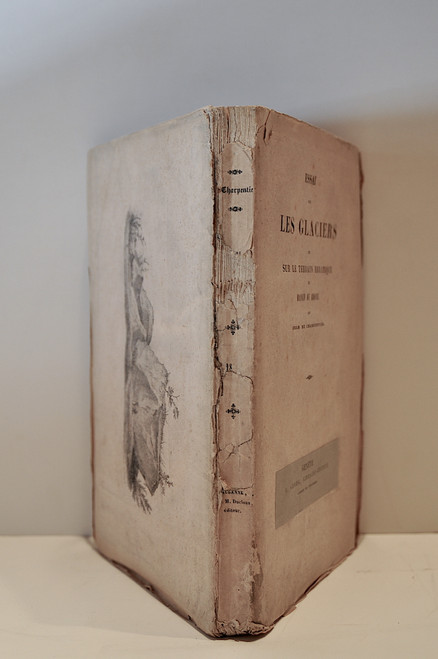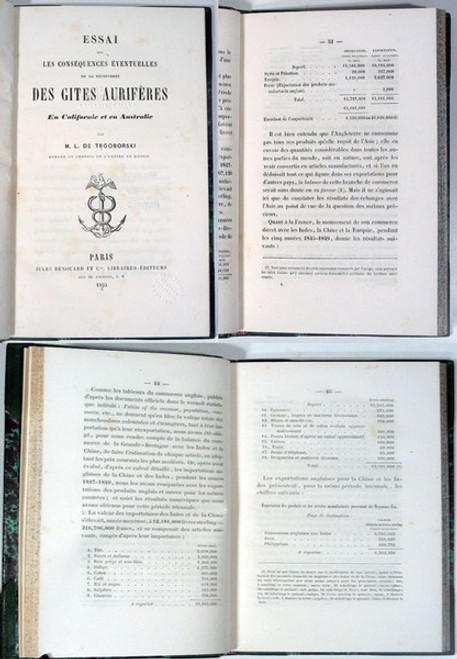Boui, Ami; Essai Géologique sur l’Écosse. Paris, Mme Ve Courcier, 1820. Octavo, pp. x, 519, 4 page errata, 9 folded engraved plates and maps (one being the hand-colored geological map of Scotland).
The work is complete and in a contemporary full tree calf with gilt spine titles and ornate gilt spine panels. The binding is tight and clean, the text and all plates and maps are exceptionally crisp and bright. In very good condition.
An Austrian geologist Aimé Boué (1794-1881) studied medicine at the University of Edinburgh. It was while he was at the University of Edinburgh that he became interested in geology through the influence of his teacher, the mineralogist Robert Jameson. Boué’s rambles with Jameson throughout Scotland allowed him to form his own conclusions as to the origin and age of the many igneous rocks of that country.
Throughout his life Boué fostered international cooperation in geological research. It was one of his life goals to propagate this cooperative approach among scientists and any other groups that might be involved in the practical applications of scientific discoveries.
He settled in Paris in 1830 and was a founder of the Société Géologique de France. For the next four years he published reports on geological progress in other countries in the Bulletin de la Société Géologique de France. In 1835 he moved to Vienna. He later made three trips to Turkey and published his geological findings in La Turquie d’Europe (1840; “European Turkey”). He then returned to Vienna, and in 1845 he finished his comprehensive overview of geology, Essai de carte géologique du globe terrestre (“Essay on a Geological Map of the World”). A major influence on Boué’s scientific development in Paris were his acquaintances with the prominent French scientists Pierre-Simon de Laplace (1749-1827), Georges Cuvier (1769-1832), Barthélemy Faujas de Saint Fond (1741-1819), Etienne Geoffroy de Saint Hilaire (1772-1844), René-Just Haüy (1743-1822), and Alexandre Brongniart (1770-1847).
Boué’s work in Scotland and his relationship to Robert Jameson laid the foundation for his later career in geology. Before leaving Scotland he published the results of his studies of the volcanic rocks in various parts of Scotland and the Hebrides in 1820 as Essai Géologique sur l’Écosse; “Geological Essay on Scotland”). This is the earliest geological overview of Scotland. Boué distinguishes between basaltic sheets and dykes, and describes the petrographic features of the various volcanic rocks. This overlooked work contains much original information.



















